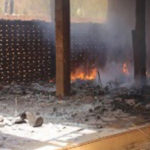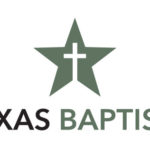ATLANTA (ABP) — Baptist Women in Ministry is seeking pulpits for an annual emphasis to promote and encourage women preachers.
The organization, which promotes and nurtures Baptist women in church leadership roles, has begun soliciting churches for the fourth Martha Stearns Marshall Month of Preaching in February. Last year 110 churches reported giving a woman an opportunity to preach, many for the first time.
This year, BWIM is encouraging congregations to invite a woman who would like to preach but has never had the opportunity.
"Of all the stories I have heard from churches and women about Martha Stearns Marshall Sundays, the most meaningful are those of churches that for the first time invited a woman to preach — or those of women who for the first time were invited to preach," said Pam Durso, executive director of the Atlanta-based Baptist Women in Ministry. "I have heard life-changing stories," she said, "church-changing stories."
|
Martha Stearns Marshall Month is an annual emphasis to give women an opportunity to preach and to educate Baptist churches about women in ministry.
|
Female preachers are rare in Southern Baptist life, but they are nothing new. One of the most famous was named Martha Stearns Marshall. She was sister of Shubal Stearns, one of the most influential evangelists in Baptist life in the United States in the mid-18th century. Her husband, Daniel Marshall, was another important leader in early Baptist expansion in the South.
The Separate Baptist tradition of Stearns and Marshall grew out of the First Great Awakening in the North American colonies in the 1730s and 1740s. They established the first Separate Baptist church in the South on Sandy Creek in what is now Randolph County, N.C., in 1755.
With a strong emphasis on evangelism and populist appeal, the Sandy Creek tradition spread from there across the South. It continues to shape Baptist life today with traditions such as the altar call.
The Separate Baptists were more emotional in their worship than the more ritualistic northerners who came to be known as Regular Baptists. Fewer of their ministers had formal training, and they were more open to women in ministry roles.
Martha Stearns was known to have preached alongside her brother. A historian writing in 1859 described her as "a lady of good sense, singular piety and surprising elocution, [who] in countless instances melted a whole congregation into tears by her prayers and exhortations."
Sign up for our weekly edition and get all our headlines in your inbox on Thursdays
BWIM chose her to symbolize the attempt to both celebrate the gifts of women in the pulpit and educate moderate Baptist churches about women in ministry.
According to a study in 2006, 40 percent of students attending 14 theology schools affiliated with the Cooperative Baptist Fellowship are women, but just 6 percent of CBF churches are led by a woman pastor, co-pastor or church planter.
Clarissa Strickland, networking specialist for the Atlanta-based CBF, said she often hears from churches in the midst of a pastor search, "I don't think our church is ready for that."
"I think that often the reluctance comes not from any great theological struggle with the idea that God can call a woman to preach and to pastor, but rather because the whole idea is so foreign to some congregations," Strickland wrote in a recent blog. "I suspect there are folks sitting in their pews who may never have been exposed to a female proclaimer in the pulpit of their own church."
Strickland said Marshall Stearns Marshall Month "offers a pretty painless opportunity" for such churches to invite a woman into their pulpit.
BWIM originally promoted the focus as the Martha Stearns Marshall Day of Preaching on the first Sunday in February. That clashed with some church schedules, so last year the group expanded it to an entire month, hoping to widen participation. If a church cannot do it in February, Durso encouraged them to do it whenever they can.
"Whenever a church can observe the day, we celebrate their participation," she said.
Durso said the event is also a good opportunity for churches that already have a woman pastor or frequently have women preach.
"This is an opportunity for your church to stand with and support Baptists who are still hoping for and dreaming of the day that their church will have a woman preach," she wrote in a recent article. "This is an opportunity for you to publicly voice your support of women in ministry, to be counted with other Baptist churches in celebrating the calling and gifts of women, and to remind your congregation that God does indeed call women to the work of the kingdom. But most importantly, this is an opportunity for your church to invite into your pulpit a woman who has never had the opportunity to preach."
To participate, churches are encouraged to save the date, reserving any Sunday in February, and to invite a woman to preach. It can be a member of the church or a student or professor at a nearby seminary or Baptist university. If they need help they can contact either Durso or Strickland by e-mail.
The Baptist Women in Ministry website carries a downloadable certificate that can be printed and presented to the featured preacher on the day of her sermon. They also sell T-shirts with the message "This is What a Preacher Looks Like."
Participating churches may send their church name, city, state, pastor, the name of your guest preacher, and contact information to Durso. All participating churches and preachers will be listed in the Baptist Women in Ministry newsletter.
–Bob Allen is senior writer for Associated Baptist Press.














We seek to connect God’s story and God’s people around the world. To learn more about God’s story, click here.
Send comments and feedback to Eric Black, our editor. For comments to be published, please specify “letter to the editor.” Maximum length for publication is 300 words.